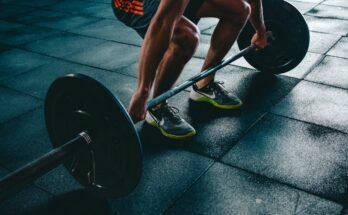Introduction
Low-Intensity Interval Training, or simply LIIT, is also called a rather easy and relaxed counterpart to those high-intensity workouts, which becomes necessary for trying to get fit or for injured persons.
Unlike High-Intensity Interval Training, LIIT is more reliant on the low-impact movement and longer rest periods between the sets. It is perfectly suitable for all fitness levels but nevertheless carries many health benefits.
This type of interval training would still raise heartbeats, build endurance, and burn calories but at a slow pace.
Standard sessions of LIIT are usually from 30-45 minutes, so considered accessible ways to get adapted to fitness with a busy lifestyle
1. Benefits of Low Intensity Interval Training
Less Stress on the Joints: The more subtle movements used in the LIIT workout reduce the possibility of injuries to the joints and ligaments; hence, it is very suitable for novices, older adults, or persons recovering from injuries.
Sustainable Fat Loss: While LIIT burns fewer calories per minute than its high-intensity counterpart, it is its low impact that can enable longer periods, thus yielding more consistent fat loss over some time.
Better Cardiovascular Health: The moderate pace improves cardiovascular endurance, hence better heart health without excessive strain.
Flexibility and Accessibility: LIIT can be done anywhere, with no or minimal equipment. It is easy to make exercises more or less challenging depending on an individual fitness and physical limitation.
Reduces Burning Out and Promotes Consistency: Gentle sessions mean less soreness and fatigue; thus, it is easy to maintain consistency and avoid burning out from fitness.
2. How Does LIIT Differ from HIIT?
Intensity and Impact: HIIT consists of very short bursts of high-intensity effort; in LIIT, the intensity is moderate and held for longer intervals.
Energy Expenditure: While HIIT usually burns more calories in a very short span, in LIIT, it is a slow burn over a longer length of time.
Recovery: LIIT has longer rest periods and less-intense exercises, which could be ideal for active recovery or one easing back into their workouts after some time off.
3. Who Should Try LIIT?
Beginners that seek to build a base of fitness without overwhelming intensity. Older adults who may wish to experience a gentle approach toward fitness. Individuals recovering from injury yet would like to stay active with the least risk of further injury.
Anyone for whom low-pressure exercise that is achievable and maintainable on a regular basis is preferred.
4. Key Factors that Make for a Successful LIIT Workout
Low-Intensity Moves: These are moves like brisk walking, light cycling, low-intensity bodyweight exercises, and low-intensity resistance movements.
Extended Intervals and Longer Rest Periods: Most low-intensity intervals are 1-2 minutes long, with rests between repetitions lasting up to 3 minutes.
Gradual Progression: LIIT does indeed allow for progressive increases in duration or resistance as one gets better; hence, it is an adaptive choice for longer-term goals.
5. Sample LIIT Routine
Warm-Up (5-10 minutes): Light stretching, arm circles, and light leg movements to get the body loose.
Workout Intervals: 30-40 minutes
Interval 1: Brisk walking or light jogging for 2 minutes followed by 2 minutes of walking.
Interval 2: 1 minute of body weight squats followed by 2 minutes of walking or marching in place.
Interval 3: 1 minute of low-impact step-ups-on a low step or stair; followed by 2 minutes of light bicycling or walking. Interval 4: 1 minute of modified push-ups-on knees or against a wall; then 2 minutes of marching or stepping in place. Repeat each interval as needed to burn 30-40 minutes total. Cool-Down, 5 minutes: Finish it off with some light stretches for all major muscles, helping relax and increase flexibility.
6. Tips on How to Make Most Out of Your Workouts in LIIT
Listen to your body: You will find the low-intensity approach lets you make some modifications according to your feelings. You can work around the frequency, not the intensity.
Focus on Form: The slower and deliberate movements give you the ability to check for proper form, which is very crucial in terms of keeping injuries away.
Add in Light Weights or Resistance Bands: Adding weight or a resistance band to basic exercises-squats, lunges, step-ups-turns them all into strength exercises. Gradually Increase Duration: For an added level of difficulty, increase the length of each interval and really push hard in each interval, keeping a careful eye on overexertion.
Consistency is Key: Remember, while each session can feel soft and easy, the sum of these sessions over time in number gives LIIT its real value.
7. Possible Downsides and How to Overcome Them
Low Calorie Burn: The calorie per minute burn for LIIT is rather on the low side when compared to more arduous workouts; longer sessions may thus be needed in order to achieve huge results in weight loss.
Solution: Combine Pool LIIT with strength training and a proper diet as part of an integrated fitness workout.
Slower Progression: Those who have been working out at high intensities will find the LIIT rather easy from what they are accustomed to.
Solution: Make active recovery with LIIT or combine it with other forms of workout to achieve variation.
8. Use of LIIT in Other Workouts
This form of exercise should be included with strength training and flexibility training, like yoga, for overall development in an effective workout program. In case one is doing other high-intensity sessions during the week, active recovery can be done using LIIT.
Conclusion
Low-intensity interval training is versatile and accessible in nature, hence making as resourceful as possible, providing sustainable benefits without harming the joints much, and focusing on gradual improvement.
By nature, LIIT is soft in approach, hence appropriate for people who want to be active, reduce stress levels, and achieve long-term fitness goals without risking health due to injury.
As with any pattern of exercise, the aim is continuity. Let LIIT, therefore, be your soft yet sure step toward life.




